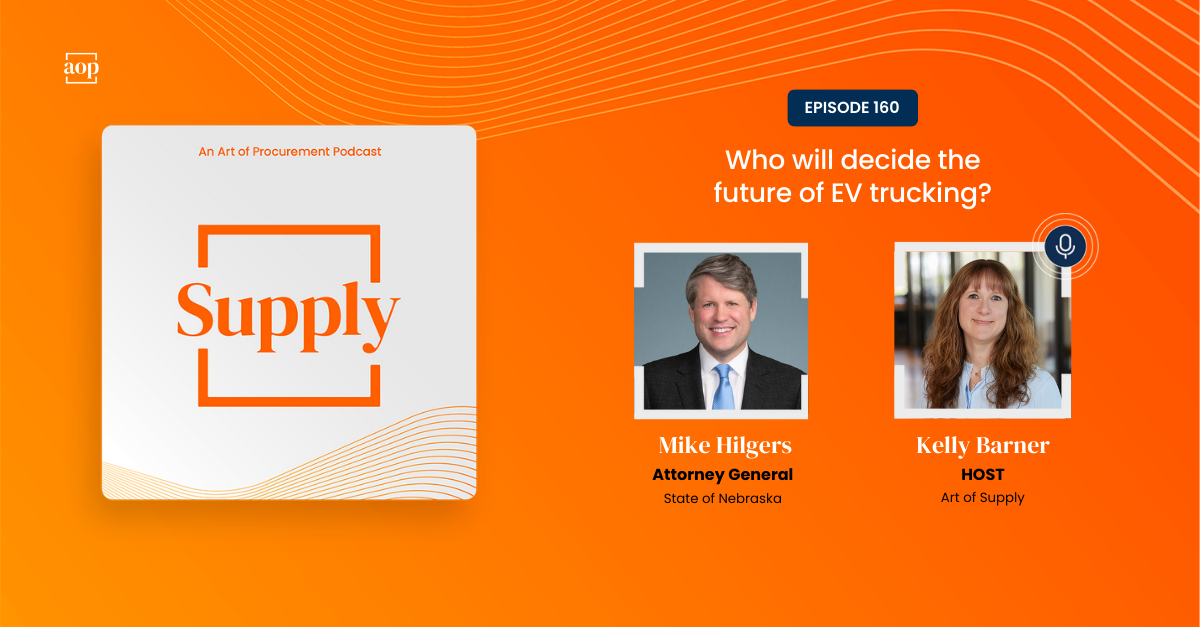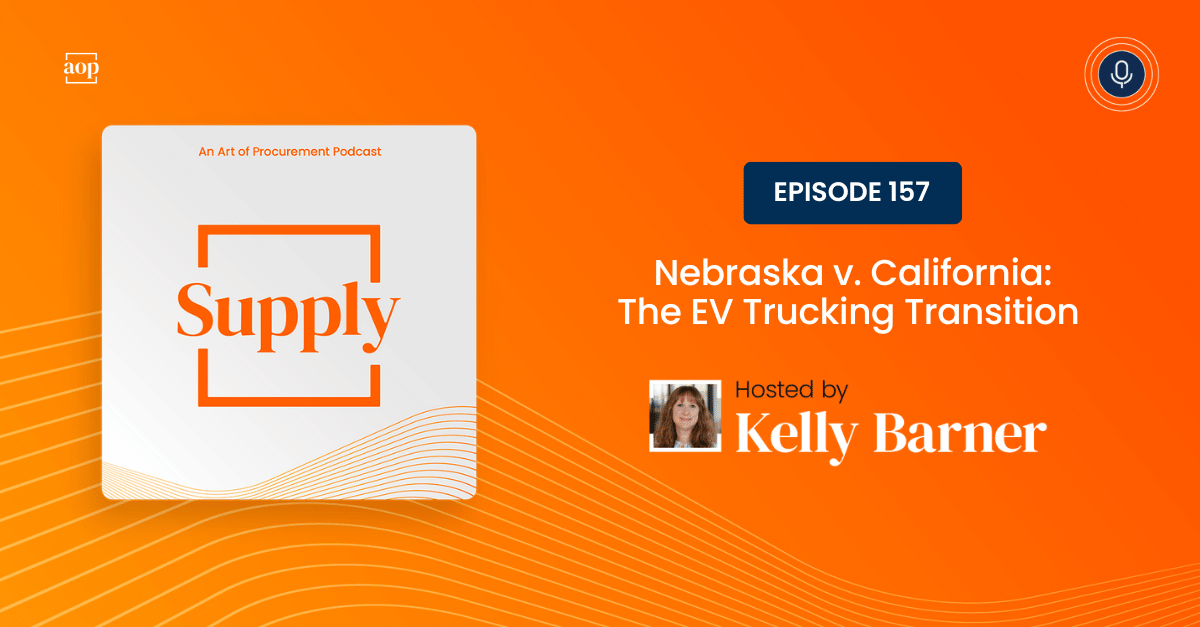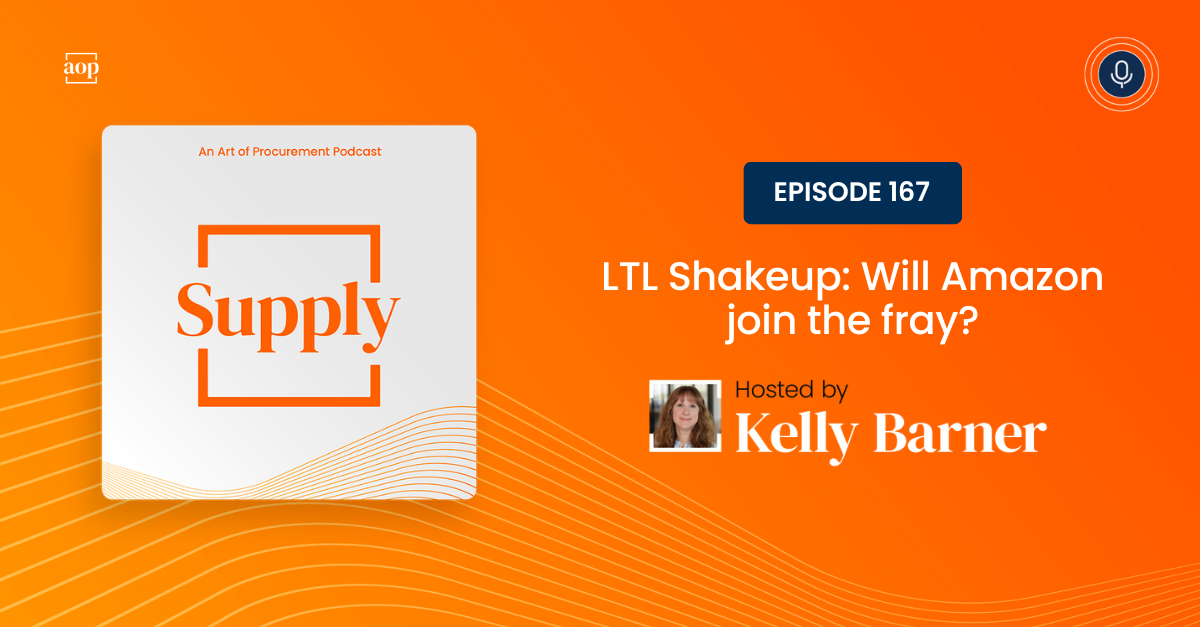
Who will decide the future of EV trucking?
Most of my reading and research into the future of EV trucking has been about feasibility. Can logistics providers make the switch in time to comply with federal requirements? Will the infrastructure be ready? Will the reduced freight capacity and downtime for recharging cause costs to skyrocket and lengthen delivery times?
I suppose that line of thinking makes sense; I’m an operational person looking at the supply chains around me. But there is another way of looking at this same issue: legally.
In this episode of Art of Supply, I had the opportunity to speak with Nebraska Attorney General Michael Hilgers about the effort his state is making to ensure that if there is a mandated transition to EV trucking, it takes into consideration all citizens, not just those who are focused on acceleration.
From Zero to 10 Million
I started by asking Mike my questions about feasibility, specifically focused on his own state. How many commercially-sized EV chargers are there on Interstate 80 in Nebraska, the longest stretch of that highway in the country?
Zero.
That starting point takes us beyond questions of readiness and raises the specter of whether a mandated EV trucking transition is wise in the near term.
“Certainly there are readiness concerns. How are you going to go to an EV future for our supply chain or our trucking fleet if you don't have a single trucking charging station in the state of Nebraska?” Mike asked. “How is it feasible to go from say a small handful, maybe a couple of hundred, maybe a couple of thousand EV trucks to replace the over 10 million diesel trucks that exist in our highways today?”
Even if there were answers to those questions, there are additional concerns associated with the resilience of the electrical grid and competing demand for energy - first and foremost: AI.
If the country had to choose between AI and EV trucking, which would they pick? If we narrowed the decision to business leaders, they might make one choice, and national security advisors might make another. The reality is, progress in either (or both) areas will require far more energy and infrastructure than we have access to today.
Policy Perspective
As it turns out, there is another side to this issue - the legal side. What is the right way to make rules and pass regulations that then become mandates for companies in multiple states?
Several groups have taken steps that would - in effect - force change far beyond their immediate circle. They include the California Air Resources Board (CARB), the Environmental Protection Agency (EPA), and heavy duty truck manufacturers. None of those groups were elected by anyone, least of all the residents of Nebraska or the 17 states that sided with Nebraska’s efforts.
CARB has special freedoms when it comes to emissions regulation because they were doing so before the EPA. And while they can set rules, any standards tougher than what the federal government has in place requires a waiver. They managed to get a waiver for part of their trucking program (Advanced Clean Trucks), but withdrew their waiver request for Advanced Clean Fleets.
The EPA’s EV mandate, which is focused on passenger cars and light- and medium-duty trucks, has also drawn the ire of 25 states (including Nebraska) for its efforts to force consumers to buy electric cars and trucks.
Last but not least are the heavy duty truck manufacturers, four of which manufacture the vast majority of heavy duty trucks. They have signed on to the Clean Truck Partnership, an agreement to manufacture EV trucks even if Advanced Clean Fleets is ruled unenforceable.
By doing so, Mike says, “they will take it upon themselves to drive us to an EV future, not let the market decide. And so we have alleged an antitrust suit. We basically said, look, you're an oligopoly. Those four control the entire market. Hey, you want to compete against one another? That's one thing, but agreeing to do this, that's another thing.”
Yellow Light
There are decisions to be made and ongoing deliberation about who gets to make those decisions. Until we have answers, companies across the supply chain find themselves stuck in the middle.
As someone who functions outside of the legal system, I find the wheels of justice painfully slow. And while I understand the need to proceed with caution, many decisions and dollars hang in the balance.
As Mike pointed out, however, it also gives everyone - supply chain, legal, or otherwise - the opportunity to review the available information, make up their own mind about what is best, and get involved.




